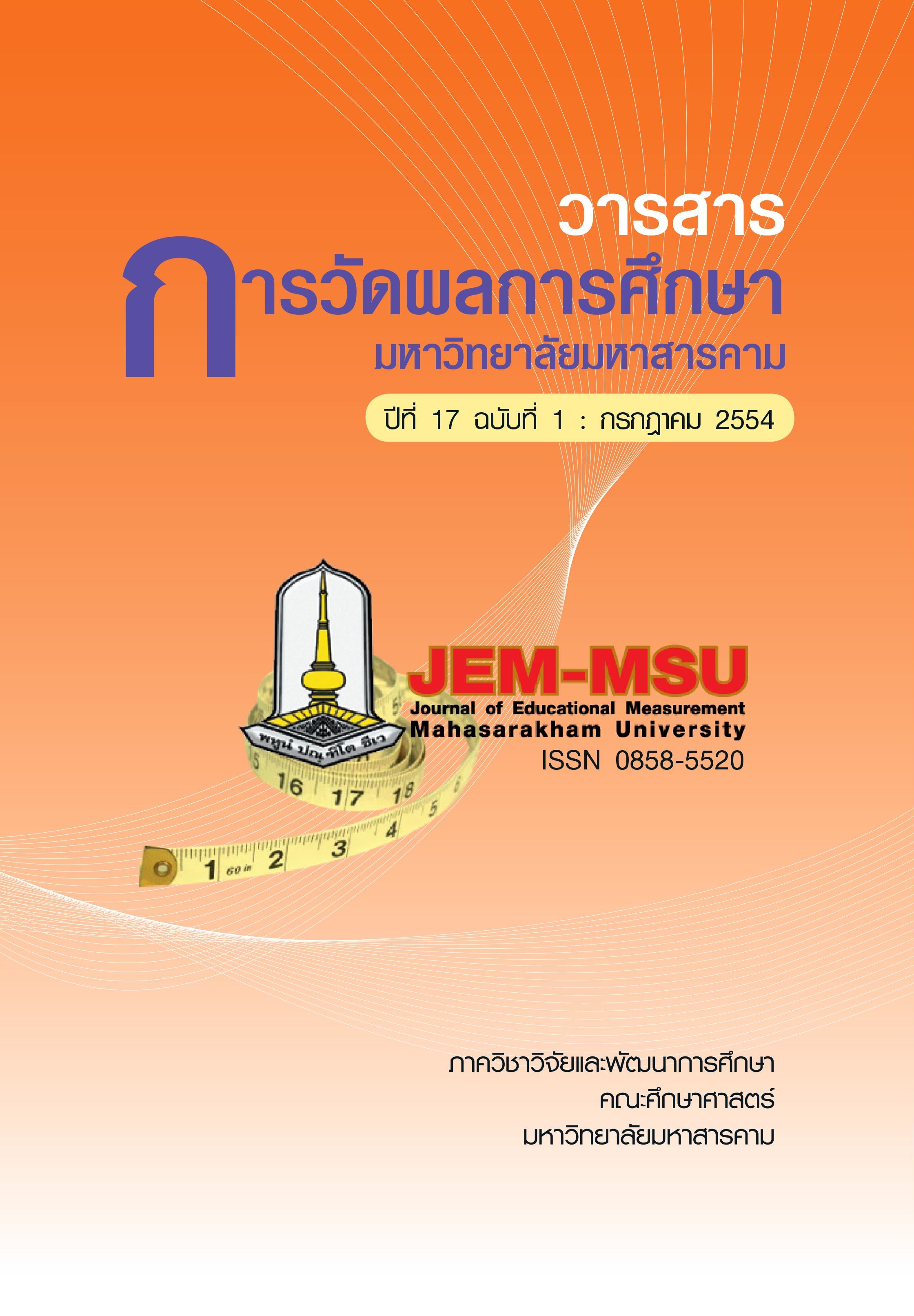A Comparison of Abilities to Solve Mathematics Problems of Prathomsuksa 5 Students with Different Learning Styles, Scholastic Aptitudes and Languages Using in Their Diary Life under the Offce of Sakon Nakhon Educational Area 1
Main Article Content
Abstract
The truly and effciently learning was in organizing learning process. Consequently,
teachers and agencies concerned should emphasize providing substance and arranging
activities with the students interest and aptitude, in students’ individual difference and
living condition. These issues produced different learning styles. The purposes of this
research were to investigate and compare abilities to solve mathematics problems of
Prathomsuksa 5 students with different learning styles, scholastic aptitudes and languages
using in their diary life. The sample consisted of 364 Prathomsuksa 5 students attending at
25 schools under the Offce of Sakon Nakhon Educational Area 1 in the second semester
of the academic year of 2008, selected using the multi-stage random sampling technique.
Two types of the instruments used in this study were : a 5-rating scale on 4 learning
styles based on the concept of Grasha and Riceman : competitive, participant, dependent
and independent, 10 items each, with a total of 40 items, discriminating powers (r
xy
)
ranging .20 - .91, and a reliability ( α ) of .95 ; and fve tests : a 4-choice scholastic aptitude
test based on the concept of Thurstone in 4 aspects : linguistic, numerical, reasoning and
spatial, 15 items each, with diffculties ranging (p) .28-.70, discrimi nating powers ranging (r)
.22-.70 and a reliability (r
tt
) of .79, .76, .79 and .70 respectively ; and a 4-choice test of
ability to solve the mathematics problems, with a total of 30 items, diffculties ranging (p)
.22-.79, discriminating powers ranging (B) .20-.71 and a reliability (r
cc
) of .89. Percentage,
mean, standard deviation and three-way ANOVA were used for analyses.
The study results were as follows :
1. With respect to abilities to solve the mathematics problems of Prathomsuksa 5
students :
1.1 The students with participant learning styles showed their abilities to solve the
mathematics problems at the highest mean score ( X =17.20). The students with competitive
learning styles showed their abilities to solve the mathematics problems at the lowest mean
score ( X =16.90).
1.2 The students with linguistic scholastic aptitude showed their abilities to solve
the mathematics problems at the highest mean score ( X =17.68). The students with spatial
scholastic aptitude showed their abilities to solve the mathematics problems at the lowest
mean score ( X =16.24).
1.3 The students with Phuthai languages using in their daily showed their
abilities to solve the mathematics problems at the highest mean score ( X =17.68).
The students with So languages using in their daily showed their abilities to solve
the mathematics problems at the lowest mean score ( X =15.89).
2. The students with different scholastic aptitudes and different languages
using in their daily indicated the different abilities to solve the mathematics problems at the
.01 level of signifcance. The students with different scholastic aptitude of verbal factor
showed their abilities to solve the mathematics problems higher than that of spatial
relation factor at the .01 level of signifcance ; and the students with different languages
using in their daily, their Phuthai and Esan languages were statistically higher than that
of So languages at the .01 level of signifcance. The students with different learning styles
did not indicate the different abilities to solve the mathematics problems ; and there were
not found the relationship between the different learning styles, the different scholastic
aptitudes and different languages using in their daily.
In conclusion, different scholastic aptitude and languages using in their diary life
could caused students to have different abilities to solve mathematics problems. There
fore teachers and agencies concerned should understand, concentrat and provide
proper and diverse learning activities for them equally. These activities could enhance
students’ capacity in self learning with their own full performance and the highest
effciency in the future.
Article Details
The content and information contained in the published article in the Journal of Educational Measurement Mahasarakham University represent the opinions and responsibilities of the authors directly. The editorial board of the journal is not necessarily in agreement with or responsible for any of the content.
The articles, data, content, images, etc. that have been published in the Journal of Educational Measurement Mahasarakham University are copyrighted by the journal. If any individual or organization wishes to reproduce or perform any actions involving the entirety or any part of the content, they must obtain written permission from the Journal of Educational Measurement Mahasarakham University.


